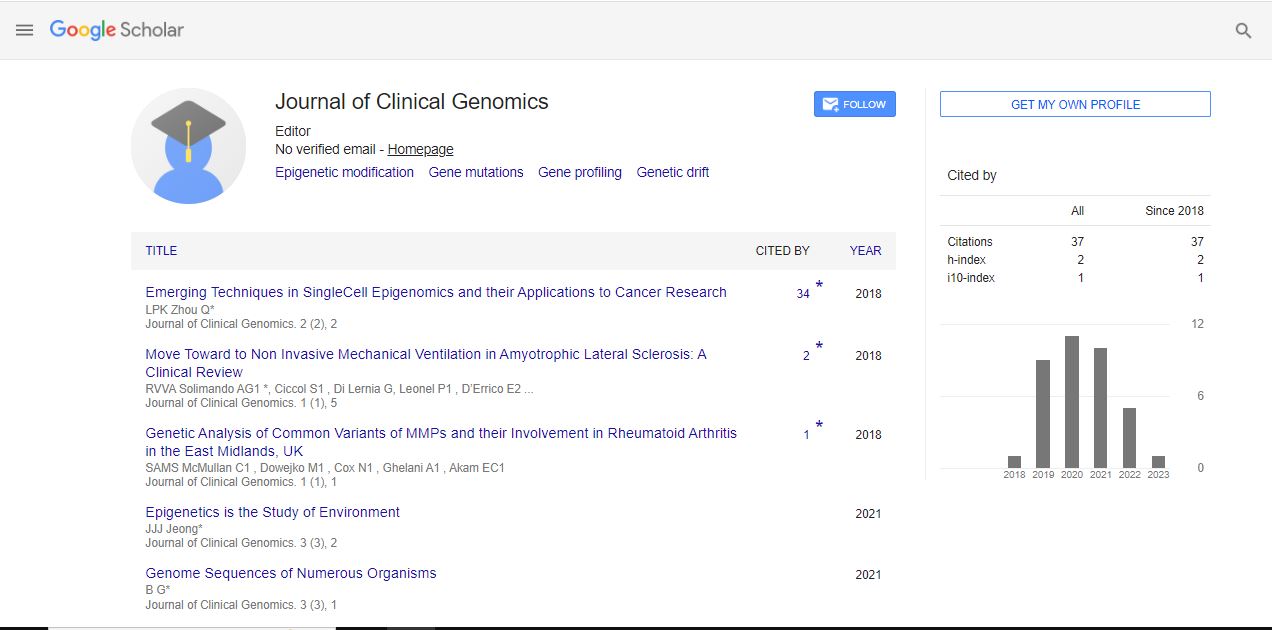Perspective, J Chromatography Res Vol: 6 Issue: 3
Nanoparticles and Automation: Revolutionizing Extraction Chromatography for Modern Science
Stephen Rein*
1Department of Medicine, Medical University of Bialystok, Bialystok, Poland
*Corresponding Author: Stephen Rein,
Department of Medicine, Medical
University of Bialystok, Bialystok, Poland
E-mail: rein.stehphen@uni.edu.pl
Received date: 05 September, 2023, Manuscript No. JCGR-23-116810;
Editor assigned date: 07 September, 2023, PreQC No. JCGR-23-116810 (PQ);
Reviewed date: 21 September, 2023, QC No. JCGR-23-116810;
Revised date: 29 September, 2023, Manuscript No. JCGR-23-116810 (R);
Published date: 06 October, 2023 DOI: 10.36648/JCGR.1000070.
Citation: Rein S (2023) Nanoparticles and Automation: Revolutionizing Extraction Chromatography for Modern Science. J Chromatography Res 6:3.
Description
Extraction chromatography, a versatile separation technique, is a critical tool in the fields of analytical chemistry, radiochemistry, environmental science, nuclear industry, and more. This method allows for the selective extraction of specific elements or compounds from complex matrices, resulting in their isolation and preconcentration.
Principles of extraction chromatography
The fundamental principles of extraction chromatography include:
Distribution constants: The distribution constant represents the equilibrium distribution of an analyte between the stationary and mobile phases.
Elution: Elution is the process of removing the retained analyte from the stationary phase. This is typically achieved by altering the conditions, such as changing the pH or ionic strength of the mobile phase, to disrupt the interactions between the analyte and the stationary phase.
Selective extraction: Extraction chromatography relies on the specificity of interactions between the analyte and the stationary phase. The choice of stationary phase and mobile phase conditions is crucial to selectively target the desired analyte.
Types of extraction chromatography
There are several types of extraction chromatography, each with specific applications and mechanisms. The primary types include:
Solvent extraction chromatography: In this method, a solvent is used as the mobile phase to extract the analyte from the stationary phase. Common applications include the separation of metal ions from aqueous solutions and the extraction of organic compounds from nonpolar solvents.
Solid-Phase Extraction (SPE): SPE employs solid materials, such as sorbent phases, to retain and subsequently elute analytes from a liquid sample. It is widely used in sample preparation for analytical techniques, including liquid chromatography and mass spectrometry.
Resin-based extraction: Resin-based extraction chromatography involves the use of resin materials with specific functionalities for the selective extraction of metal ions. It is extensively used in nuclear and radiochemical analysis.
Applications of extraction chromatography
Extraction chromatography finds a wide range of applications across various fields due to its ability to selectively separate and purify specific elements or compounds. Some of the notable applications include:
Radiochemical analysis: Extraction chromatography plays a vital role in the nuclear industry for the separation and purification of radionuclides. It is used in the processing of nuclear fuels, the analysis of environmental samples, and the production of radiopharmaceuticals.
Chemical separations: Extraction chromatography is valuable for the separation of metal ions from complex mixtures, such as in hydrometallurgy, where it is used to extract valuable metals from ores and industrial process solutions.
Recent advancements in extraction chromatography
Recent advancements in extraction chromatography have significantly improved the efficiency, selectivity, and applicability of this separation technique. These developments have expanded its utility in various fields, including nuclear industry, environmental science, pharmaceuticals, and more. Some of the notable recent advancements in extraction chromatography include:
Nanoparticle-based extraction: The incorporation of nanoparticles in the stationary phase has led to improved extraction efficiency and selectivity. Nanomaterials can offer enhanced surface area and reactivity for analyte retention.
Automated systems: Automation has become more prevalent in extraction chromatography, allowing for high-throughput and reproducible sample preparation. Automated systems can handle multiple samples simultaneously and reduce human intervention.
Hyphenation with mass spectrometry: The coupling of extraction chromatography with mass spectrometry provides a powerful analytical tool for the identification and quantification of analytes. It is particularly useful in the analysis of complex mixtures.
Green extraction: The development of environmentally friendly extraction chromatography methods, such as the use of green solvents and reducing waste generation, aligns with the principles of sustainable chemistry.
Conclusion
Extraction chromatography is a robust technique that finds applications across various fields, including nuclear industry, environmental science, pharmaceuticals, and more. Its ability to selectively extract and pre-concentrate specific elements and compounds from complex matrices is invaluable in analytical chemistry and scientific research. Recent advancements, including the use of nanoparticles, automation, and hyphenation with mass spectrometry, have further improved the efficiency and applicability of this method. As the analytical needs of various industries evolve, extraction chromatography continues to adapt and contribute to scientific advancements and environmental monitoring.
 Spanish
Spanish  Chinese
Chinese  Russian
Russian  German
German  French
French  Japanese
Japanese  Portuguese
Portuguese  Hindi
Hindi 